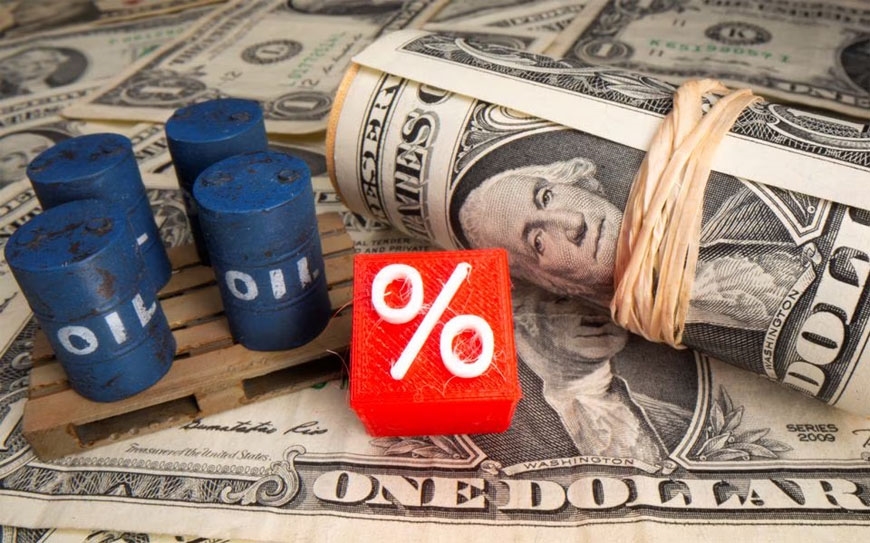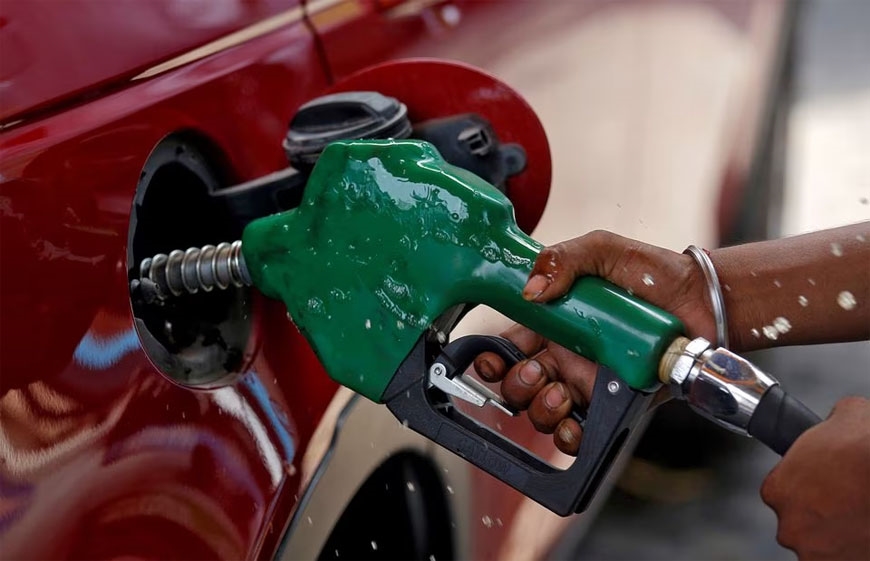The US debt ceiling bill passed by the House of Representatives has helped fuel oil prices to accelerate. Brent crude oil prices rose above $74/barrel, while WTI oil cooled slightly.
World oil prices
Oil prices rose nearly 3% at the end of the trading session on June 1. Oil prices climbed ahead of the OPEC+ meeting this Sunday. Oil prices were supported by news that the US House of Representatives passed a debt ceiling bill, offsetting the impact of last week's increase in US petroleum reserves.
 |
| Gasoline prices increased in the context of the US debt ceiling bill being passed by the House of Representatives. Illustration photo: Reuters |
US West Texas Intermediate (WTI) crude futures rose $2.01, or 3%, to $70.10 a barrel, their biggest daily gain since May 5. Brent crude for August delivery rose $1.68, or 2.3%, to $74.28 a barrel, their biggest daily gain since May 17.
Both oil benchmarks quickly recovered from two consecutive sessions of decline after the US House of Representatives passed a bill late on May 31, increasing the chances of preventing a US debt default. After the House passed the debt ceiling bill, it will be sent to the Senate for consideration and a vote.
“Successful debt ceiling negotiations have cleared the minefield, but the overall demand outlook remains murky,” said CFRA Research analyst Stewart Glickman, citing poor performance in the trucking sector as an example.
Market focus is also gradually shifting to the June 4 meeting of OPEC+.
According to OANDA analyst Craig Erlam, the OPEC+ meeting this weekend has the market quite cautious about (low) prices, especially with the 'watch out' warning from the Saudi Arabian Energy Minister.
Reuters quoted four OPEC+ sources as saying that OPEC+ is unlikely to deepen supply cuts at the next meeting. However, some analysts said that possibility is still possible due to the disappointing demand indicators from China and the US in recent weeks.
According to data from the US Energy Information Administration (EIA), US crude oil inventories unexpectedly rose last week due to increased imports and the strategic petroleum reserve fell to its lowest level since September 1983. According to the EIA, US oil reserves increased by 4.5 million barrels in the week to May 26; gasoline reserves decreased by 200,000 barrels.
 |
| Oil prices returned to mixed after data showed US oil reserves increased last week. Illustration photo: Reuters |
“Third Bridge experts won’t rule out more aggressive action from OPEC+, but the current tug-of-war in the market is seasonal versus cyclical,” said Third Bridge analyst Peter McNally.
“We are watching to see how the summer demand surge in developed countries will relate to the difficulties in China’s cyclical recovery. This will determine how effective OPEC+ is,” McNally added.
Domestic gasoline prices
Domestic retail prices of gasoline on June 2 are as follows:
E5 RON 92 gasoline is not more than 20,878 VND/liter. RON 95 gasoline is not more than 22,015 VND/liter. Diesel oil not more than 17,943 VND/liter. Kerosene not more than 17,771 VND/liter. Fuel oil not exceeding 14,883 VND/kg. |
The above domestic gasoline and oil prices were adjusted by the Ministry of Finance - Industry and Trade in the price management period on June 1, with the highest gasoline price increase of 516 VND/liter and the highest oil price decrease of 275 VND/liter (kg).
According to the joint ministries, the world petroleum market is affected by many factors that cause petroleum prices to increase and decrease alternately. In this management period, the joint ministries decided to maintain the same level of the Price Stabilization Fund for all petroleum products as the previous period and continue not to spend the Price Stabilization Fund for all petroleum products.
Since the beginning of the year, gasoline prices have undergone 15 adjustments, of which 9 have increased, 5 have decreased, and 1 has remained unchanged.
MAI HUONG
Source


![[Photo] General Secretary To Lam receives French Ambassador to Vietnam Olivier Brochet](https://vstatic.vietnam.vn/vietnam/resource/IMAGE/2025/4/17/49224f0f12e84b66a73b17eb251f7278)

![[Photo] National Assembly Chairman Tran Thanh Man meets with outstanding workers in the oil and gas industry](https://vstatic.vietnam.vn/vietnam/resource/IMAGE/2025/4/17/1d0de4026b75434ab34279624db7ee4a)
![[Photo] Promoting friendship, solidarity and cooperation between the armies and people of the two countries](https://vstatic.vietnam.vn/vietnam/resource/IMAGE/2025/4/17/0c4d087864f14092aed77252590b6bae)
![[Photo] Nhan Dan Newspaper announces the project "Love Vietnam so much"](https://vstatic.vietnam.vn/vietnam/resource/IMAGE/2025/4/17/362f882012d3432783fc92fab1b3e980)
![[Photo] Closing of the 4th Summit of the Partnership for Green Growth and the Global Goals](https://vstatic.vietnam.vn/vietnam/resource/IMAGE/2025/4/17/c0a0df9852c84e58be0a8b939189c85a)
























![[Photo] Welcoming ceremony for Chinese Defense Minister and delegation for friendship exchange](https://vstatic.vietnam.vn/vietnam/resource/IMAGE/2025/4/17/fadd533046594e5cacbb28de4c4d5655)



























![[Video] Viettel officially puts into operation the largest submarine optical cable line in Vietnam](https://vstatic.vietnam.vn/vietnam/resource/IMAGE/2025/4/17/f19008c6010c4a538cc422cb791ca0a1)






































Comment (0)